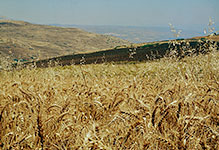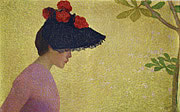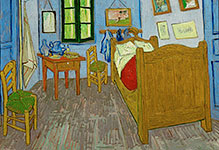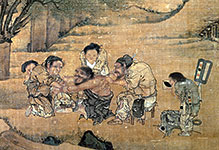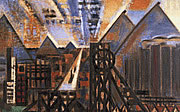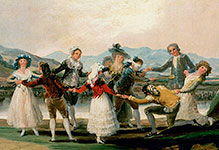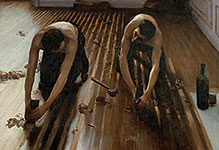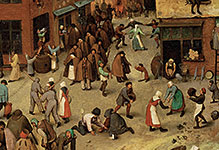
Daily Life
Work, Leisure, Clothing and Textiles, Politics and Portraits, Furniture, Houshold, Funerals, Death, Murder, Family.

#03050243
Lid of a funeral urn, from Chiusi. H: 45 cm N.I.8480

#03050257
68-69 was the year of four emperors: Galba, Otho,Vitellius and Vespasian.Galba w...

#03050258
Emperor Vespasian. Porphyry,Sicilian jaspis,alabaster....

#03050269
Central scene of the east frieze of the Parthenon,the Acropolis,Athens. 438-432...

#030503 9
Black-figured "Siana" cup, Greek, 575-550 BCE. Both sides of this cup show activ...

#03050310
White ground jug, attributed to the Brygos painter, around 490 BCE. The finely d...

#03050312
Limestone statue of a female worshipper playing a lyre, Cyprus, 300-280 BCE. She...

#03050331
Detail of a fallen warrior from the East Pediment of the Temple of Aphaia, Aegin...

#03050367
Terracotta ash-urn in the form of a woman lying in bed, Etruscan, 510-490 BCE....

#03050369
Bronze statuette of Vanth, Etruscan, found near Mount Vesuvius, Italy, 425-400 B...

#03050370
Painted sarcophagus of Seianti Hanunia Tlesnasa, 150-140 BCE, found at Poggio Ca...

#030504 1
Terracotta figure seated on a throne, Mycenaean, from Greece, c1300 BC. This cha...
